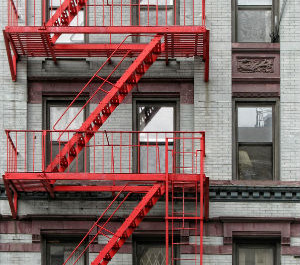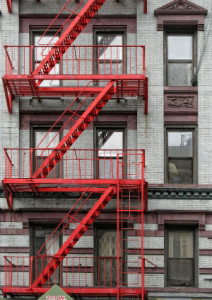History of the necessity of fire escapes
Visit any of the older cities in the US especially those on the east coast and you will find what has both been described as the bane of American architecture and its most enduring feature, the fire escape.
Like much of history, the story of the fire escape is not so much, one of foresight as one of hindsight with innovation and progress being the reaction to a tragedy rather than being made to prevent a tragedy in the first place.
Early Necessity Of Fire Escapes
The earliest legislated fire escapes in the United States came as a reaction to what was known as the Elm St. fire in February 1860. A tenement fire that broke out in the basement of a double six storied tenement in which ten people, all women and children, perished in full view of the public on the street. See here for the published story in 1860.
The resulting outcry led to New York City’s first egress law as well as new building standards for other large structures such as hotels.
These laws were regularly evaded due to vagueness. Tenement owners avoided compliance due to cost and hotels due to aesthetics. The results being that little more than rope swings and flimsy fixed ladders were ever provided.
Time For Progress
Despite several further incidents little progress was made until the Southern Hotel fire that took place in Saint Louis on April 11, 1877. In this fire more than 100, socially prominent, guests perished; trapped in their room with no way out.
This fire for the first time caught the attention of officials across the country and prompted more strenuous but still ineffective regulations in most every major metropolitan area.
It wasn’t until the Windsor Hotel fire in New York City, in 1899, when the public watched in horror as dozens of people not only died due to the fire but plunged to their deaths from, the woefully inadequate, fire egress systems that regulations were born that mandated what we now know as the fire escape.
With the passage and enforcement of detailed fire escape regulations nationwide, in 1901, a new cultural icon was born. Fire escapes became extensions of the cramped living conditions found in many areas and the subject of artistic works, including the literary works “The Boy Cried Murder” that spawned the Alfred Hitchcock classic “Rear Window” and the Tennessee Williams classic “Glass Menagerie”.








